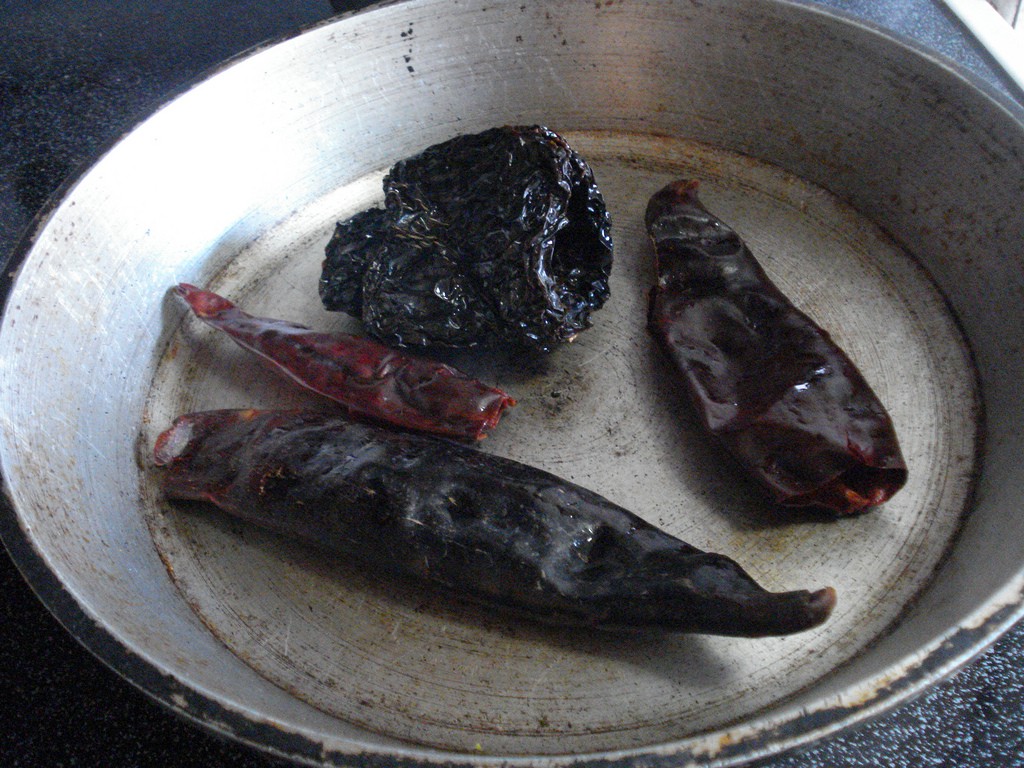"A semi-ironic acknowledgement of a confused desire to shag the leader of the opposition"
“[O]n the internet, your declaration of interest says something about who you are. This says: I am progressive and I follow politics with a keen sense of irony. And I fancy Ed Miliband.”
— There is some fucked up shit going on in Britain right now.
New York City, April 21, 2015

★★★ Blue made a promising start, then surrendered abruptly to gray and a sudden shower. The three-year-old, headed out to preschool, had to be brought upstairs again to fetch boots. The air was suffocating. When the sun did come, the light was all the more dazzling off the wet surfaces. The dampness became refreshing as an evaporative breeze blew. Up on the office roof, the chairs were dry and the sun sent a blurry image of the computer logo through the front of the screen. Sweet, liquid birdsong carried along Prince Street. The maple canopy was thin but in place, nascent green-gold. Blossoms announced trees that had been previously inconspicuous against scaffolding. Sunset was slow, the sky passing through shades of pink, the clouds through purples.
How to Name a Baby

In the earliest days of pregnancy, the easiest thing to focus on, when you know nothing of parenting or babies or life after giving birth, is what you will name the baby. Josh and I didn’t so much “focus” on it as we glossed over it, around it, and through it, nightly, as we gathered ourselves onto the couch with Penny, our dog. “How did we name Penny?” Josh asked one of those early, first trimester nights. “You named her,” he added. “Yes,” I agreed, always happy to take credit for anything good we have done. “Well,” I continued, “I remember looking at her, after she fell off the couch, talking about the spot on her head, and it was really copper, and I thought, ‘Oh! Like a Penny!’”
A few days after naming Penny, I emailed my cousin a photo of her. “She looks JUST like our dog Penny!” she said. My heart sank. There was, in fact, another Penny. Inspector Gadget had a Penny. I knew a Penny in grade school. The TV show Lost had a Penny. The world was, in fact, lousy with Pennys. “I’m not so original, maybe!” I thought. But Penny grew into her name until, she was the only Penny I know. She inhabits the Penny name better than any Penny, before or after.
So, when I thought of naming my child, I took Penny as an example of “good naming.” I would name my child as I had named my Chihuahua: a good, strong name, not very common but not so obscure that it stuck out. And, for whatever reason, I operated, in the earliest days of my pregnancy, under the false assumption that my baby was a boy; I considered the possibility that it would be a girl, but discarded it because naming a girl seemed like a chore. Our son’s name would be Max. It was the only obvious and pleasing choice.
The fact that the baby’s last name would be Topolsky made it trickier; it’s a hard name to build a rhythm with. Topolsky is Eastern European and people are critically unable to sound it out. “Penny Topolosky?” the vet gingerly squeaks out as we stand up. People mispronounce it and fumble around as we wave our hands “Yes, that will do!” I, who was born with an even MORE flummoxing Eastern European surname, thought it was a decided upgrade as I signed the forms to legally change what was given to me at birth. If Topolsky was to be the surname, a good, strong, monosyllabic first name like Max would offset it.
But then I was having a girl. “Well, she will be a June, obviously,” I said to Josh.
I was born Laura June, conveniently in the middle of June. My mother, whose own middle name was June, was born in August. I confess that I began to track my family tree to find out what the root of “June” was: not my grandma Peg (born in June, 1924) or her mom, Anna (born June, 1893). I get lost after that. I had always been proud to carry a name from female to female, there in the middle, not really bothering anyone, a little matronymic reminder.
But we had nothing for a first name. Girl names, we agreed, were much harder. For months, we floundered. Naming a child seems like a huge responsibility. It IS a huge responsibility. You don’t want to fuck it up. The baby-naming industry is born of this fear: that you’ll fuck it up.
“You gotta just go big with Topolsky,” my brother-in-law Eric said, just a few weeks before she was born. I’d never thought of it in that way, really. We had a few odd names, but for the most part, simple, quiet names dominated our very limited list. “Why not be sure there is never another whatever you name her? Go big,” he seemed so confident in this advice.
Josh and I had flirted with names that started with Zs for a while: Zora we liked because it sounded like an alien name; we discarded Zara because of the brand. The week before she was born we sat on the couch. I was so fat I could barely breathe. “Zora June,” I said to myself, looking at the books on their shelves in front of us. “It’s pretty good,” Josh agreed. “What about Zelda?” I asked. We talked it over. It was big; it sounded good; it was classic but unpopular; it worked well with the middle and surname; and it was unlikely that there was another Zelda Topolsky out there in the world. Still, we sort of put it off.
The day that Zelda was born, I spent a few minutes alone in the operating room with an anesthesiologist and several nurses getting the epidural that I needed for the C-section. “What are you going to name her?” the nurse asked, trying to relax me enough that the epidural could be properly inserted. I didn’t answer, looking off into the distance. “You know what’s weird,” I said, already inhabiting the hazy space between waking and sleeping that would dominate the next three days, “That Adolf is just a ruined name. You can’t even use it at all anymore,” I continued as he pronounced the epidural a success, laying me down. “If you ask me, it wasn’t that great of a name to begin with,” he said.
I wanted to avoid saying “Zelda” out loud, because naming a thing always feels somehow crooked or off right at first. The name seems hastily applied rather than earned. But when she was born ten minutes later, a little purple thing pissed off in a giant plastic salad bin with a heater, Josh and I agreed. Zelda it is.
Form Properly Ruined
“Yes, I am Hamm. One of my favorite things about the secret man who drinks at work is that he is actually a different man. Don Draper is Dick Whitman, but nobody knows. Dick Whitman saw Don Draper explode, and then Dick Whitman became Don Draper, and now Hamm is Draper. I thought that this was the best, and so when we were filming the show, I would always end every scene by saying, ‘I’m not Don Draper, I’m Dick Whitman! Yowza!’” — An oral unhistory of Mad Men.
New York City, April 20, 2015

★ Not a shower so much as a boot-dumping over the morning, soaking coats and quashing plans. Somewhere under the cold water was a little more green. At school’s end there was a blowing mist, and a thicker mist lurking around the tops of the towers. It was hard to say exactly when the last drizzle stopped falling, only that what took over was a suddenly suffocating ambient humidity that felt unbearably hot while still being chilly. A robin hopped in a planting bed, its breast the same color as the soggy mulch. The fog descended.
It's Not a Desert When the Oasis Can Be Brought to You

Here’s what seems like a weird thing happening in certain parts of Brooklyn that will feel familiar to people who live in prospering large or even mid-sized cities:
[F]ood culture in Brooklyn blossomed, and the new food options reflect the increased demand for all things organic and artisanal. The paradox is that this bounty is mostly unavailable in lower-income neighborhoods, where inexpensive options have been driven out. Since 2006, two large, affordable supermarkets on Myrtle Avenue have closed, replaced by apartments; smaller and often more expensive specialty food stores have moved in to fill the void, although there are plans for a Key Food to open in one of the buildings. The situation will soon become even more difficult. In February, Slate Property Group announced plans to close the Key Food at Lafayette Avenue and Grand Avenue in Clinton Hill. It, too, will be razed for residential development.
One might expect that the arrival of humans flush enough to inhabit the stacks of well-appointed domiciles going up in these neighborhoods would herald the development and construction of new grocery stores, at last bringing this “bounty” to their doorstops. And it might. But these humans are, by and large, a new species of gentrifier:
These residents live on a different grid than their new neighbors, one that is now invisibly overlaid over certain large urban centers (but not yet over the suburbs). They have their own transportation system; they summon cars in minutes, which will take them everywhere for a price that is objectively high but subjectively low. They receive food in a similar way, freshly prepared and delivered in a bag, or gathered from a warehouse and delivered in a box. Shopping is a silent and stationary activity. The goods come to the shopper, even furniture, not the other way around.
Much of the consumer infrastructure required to serve these people in their new neighborhoods can now be constructed in such a way that it is wholly inaccessible to the local residents who have not yet been displaced without being physically separate; the kinds of (in)efficiencies generated by the app economy allow money to do this perfectly well on its own. One result of this is that that the supposed benefits for local residents that are normally ascribed to the process of gentrification — which serve in part to lend a social weight to the economic machinations that have displaced their neighbors — are more attenuated and less assured than ever.
Consider the experience of one neighborhood resident interviewed by the Times, which would be wholly alien to any one who has moved, or will relocate to, a glass box that hovers above one of these food deserts:
At the beginning of each month, Ms. Mann stocks her pantry at the Western Beef supermarket on Empire Boulevard, more than three miles from her apartment. She then buys fresh produce twice each week at the Pathmark at the Atlantic Center, a mile and a half away. Because she buys so much, she said, she needs to take a cab. All told, she estimates that she spends close to $200 each month just getting to the supermarket to buy food for herself and her four children. “You have to go out of the neighborhood to get anything,” Ms. Mann said as she unloaded nearly two dozen food-filled plastic bags from a cab’s trunk. “It’s tough, but we work with what we’ve got.”
It’s hard to avoid imagining one of her new neighbors casually (and helpfully!) mentioning, “Have you heard of Instacart? It’s an app that just goes to the store for you. Changed my life. Now I never have to leave my Slack. The first delivery over ten bucks is like free, man. Here’s my referral code!”
Photo by Heather M
Burn the Vegetables

A few months back, I went on a vacation to Oaxaca. While I was there, I took a cooking class, hoping to learn about some new ingredients, maybe have someone experienced walk me through a mole, the ridiculously complex and cherished sauce of Oaxaca. Instead I found out that I don’t know shit about cooking. Like, I didn’t even know how to heat up a pan.
Oaxacan recipes aren’t structured like ones indebted to the legacy of Western European cuisine. Sauces aren’t built the same way. Ingredients and equipment I hadn’t even realized were European — olive oil, enameled cast iron, chef’s knives, fresh rather than dried or preserved ingredients — were suddenly unimportant. Ingredient lists there seemed to include several barely distinguishable varieties of each individual item, like dozens of varieties of chiles, all used in slightly different ways. Precise, Frenchified knife cuts gave way to labored grinding in a molcajete, the Mexican version of a mortar and pestle.
One of the strangest techniques, I thought, was a thickening agent for a mole chichilo, an intensely savory version of the signature sauce: the seeds of a local variety of chile, along with a few corn tortillas, were placed on a dry, very hot griddle, and allowed to blacken — to burn. The burnt, bitter seeds and tortillas were ground and added back into the sauce.
This is unthinkable in most American food; if something is burnt, it means you fucked up. All I could think was, I don’t know anything about cooking. Over and over, as I ate grasshoppers and three or four other varieties of mole and tlayudas and chocolate and mezcal, I tasted smoke, which is a base flavor in Oaxacan food, as important as sweet and sour and umami. The burnt chile seeds and tortillas, blended with beef stock, tomatoes, tomatillos, allspice, toasted avocado leaves, and cumin, didn’t taste burnt. The sauce tasted dark and sinister, bitterness balancing richness and sweetness, all coming from a base level of smokiness.
I can’t teach anyone anything about real Mexican cuisine. But the idea of heating in a dry pan was something that was never really in my regular rotation, and now it is, and I think it’s very cool and maybe there are some other people reading this who also haven’t much messed around with it. For me it was the equivalent of getting, I don’t know, an immersion circulator, except way better, because I love what dry heat does to vegetables and the immersion circulator is sort of a pain and makes me feel like a real doof to use it. It’s a whole new way of heating up food, closer to indoor grilling than frying, sautéing, braising, or poaching.
Dry heating can be done with various traditional implements but one of the best tools for it is one you might have already: a regular cast iron pan. Nonstick won’t work for this. Enameled cast iron isn’t my favorite, either. Your Le Creuset won’t do a great job at most of these tasks, because it’s naturally non-stick, and we actually want some of this stuff to stick. And burn. Stainless steel is okay, but expensive, and I prefer the rough surface of a cast iron for this, which could well just be superstition. You also won’t be stirring things around the way you do when frying in oil, a habit which can be hard to break. Just gotta let it cook.
A warning: Dry heating in cast iron will set off your smoke alarm at least once during each of these recipes. Your house may very well fill with smoke. Make sure a window is open, a vent if you have one, or maybe point a fan out toward the window.

Basic Salsa
Shopping list: Dried chiles (guajillo, ancho, or de arbol), tomatoes (canned fire-roasted if not in season; we are currently not in season), lime, garlic, cilantro
Get out your cast iron pan and set it to medium heat. Take some chiles, break off the stems, and shake out the seeds inside. Discard stem and seeds. How many you use will depend on which variety you got as well as your taste. Ancho and guajillo are both good all-around chiles — not too spicy, a little fruity. Chiles de arbol are pretty spicy. Anyway, throw the chiles on the cast iron and watch very carefully. They’ll begin to soften and get fragrant really quickly; turn them after about a minute or two and cook for the same amount of time. Don’t let them burn; you don’t want these to be black. When pliable and smelling delicious, snag them off the pan with a pair of tongs and throw in a food processor (alternately, in a blender, or mortar and pestle, or molcajete).
Take five cloves of garlic, separated from the head but NOT peeled. Make sure the papery husk is still around each clove. Toss them into the pan and roast, turning every few minutes, until they’re all splotchy with black burn-marks. When a little soft, maybe fifteen or twenty minutes, take them out, allow to cool, then peel. Throw them in the food processor (or whatever).
If using canned tomatoes, make sure to get decent-quality fire-roasted tomatoes, because there’ll be no real way to burn the sugars in a canned tomato that’s already broken down a bit. Toss the whole can in the food processor along with a squeeze of lime and some salt and blend until smooth.
If using fresh tomatoes, slice in half width-wise and place them cut side down on the cast iron pan. Do not touch them! They will sizzle and begin to burn. Wait maybe five or ten minutes until they’re soft to the touch, then scrape them up with a spatula and throw in the food processor, and complete as before. Top with chopped cilantro.
Charred Fennel Salad With Tangerine Vinaigrette
Shopping list: Fennel, tangerines, hazelnuts, arugula, red onion, olive oil, rice wine vinegar, sugar, parmesan or pecorino cheese
First things first, let’s quick pickle. Take your red onion, cut it in quarters, then shave thinly, preferably with a mandolin so it doesn’t take like four years. Place in a glass tupperware. Set a saucepan over high heat and bring the vinegar and sugar, in a ration of about 2:1, to a boil. Just when it boils, take it off the heat and pour over the onions. Stir quickly and cover. Let it cool down while at room temperature.
Heat a cast iron pan to medium. Toss a handful of hazelnuts on there, tossing to make sure they’re evenly toasted. When fragrant and golden brown, take off the heat.
Then slice a bulb of fennel into slices, maybe a quarter-inch thick. Throw the fennel on the pan so recently vacated by the hazelnuts. Don’t stir. After a minute, flip gently; the bottom should be blotchy with a few black spots, but not totally black. Flip and cook the formerly uncooked side for the same amount of time.
Make the vinaigrette: Squeeze a tangerine into a glass. Drizzle in about half as much olive oil while mixing vigorously with a fork or whisk or immersion blender. Add a splash of rice wine vinegar and season with salt and vinegar.
Lay the charred fennel down on a plate. Toss some hazelnuts on top, then a handful of arugula, then some slices of pickled red onion, then shave some parmesan or pecorino on top. Good shaves, too; not little shreds, you want to be able to pick up the cheese with a fork. Pour vinaigrette over the top and serve.
Charred Corn Salad With Charred Lime
Shopping list: Can of corn, pumpkin seeds, lime, Greek yogurt, cotija (or feta) cheese, olive oil, cumin, cilantro, hot sauce
Take your can of corn and drain it, then spread it out on a few paper towels and lay a more paper towels on top and pat it dry. Get out your cast iron pan and put it on the stove over medium heat.
In a small bowl toss a handful of pumpkin seeds with a teaspoon or so of cumin. Then throw those all in the cast iron pan and toast until fragrant and non-raw-tasting. (You’ll know when they’re done, just keep eating them.) Remove and allow to cool. Throw in the corn, and let it sit for a minute, then toss and let char for another minute. There should be black bits. You want black bits. We are burning food, it should look a little burnt. When charred, remove from pan.
Slice a lime in half and jab it cut side down onto the pan. Let it sit there for a minute or two and then pry it off. It should look kind of caramelized and, well, kind of burnt.
In a big bowl, toss the corn, pumpkin seeds, a dash of hot sauce, a small spoonful of yogurt (mayonnaise is traditional, I just don’t like it much), a bunch of crumbled cheese, and a little bit of olive oil. Salt to taste. Top with cilantro and serve the charred lime on the side for squeezing.

I’m still experimenting with this whole charring on a dry pan thing; when the spring vegetables come, I’m going to smoke out my entire apartment building trying to figure out if I can apply that kind of heat to asparagus, spring onions, that kind of thing. It feels like one of those techniques that will add a totally new dimension to any variety of dishes, even though the neighbors will probably think they live next some kind of pyro.
Photo by Amy Stephenson
More Excuses For Internet Terribleness
“On TV, when one program ends, another starts, and users accept that experience. The Internet started as a newspaper, but now it’s turning into TV,” says a guy who is explaining why pretty soon every video you see on the web will auto-play. Also sometimes video “has something incredibly powerful to communicate,” says another guy, so why not start it without letting the user decide? It’s all about improving your experience anyway, right? I mean, that is generally the way we try to excuse the erosion of standards. I guess if you want to look on the bright side it’s that people still feel like they have to pretend they are doing this for reasons in addition to the money. So sure, it’s about storytelling. I mean, whatever, much like the planet the Internet is way past the the point of saving, what difference does it make how much garbage you chuck up to the top of the pile anymore?
The Town Too Hip For Meth
“’When we’ve talked to people who are involved in rehab treatment and all that, or users of other drugs, there is a stigma attached to meth use among New Yorkers,’ Brennan says. Many city dwellers think that it’s for ‘people in the trailers or out in hillbilly country or whatever’ and that they’re ‘too sophisticated’ for meth, she says, paraphrasing their comments. ‘They don’t view it as a “New York” drug,’ she adds.”
